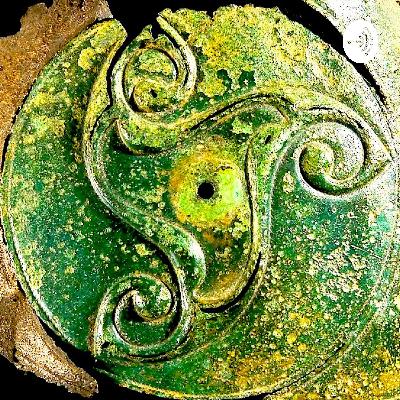Discover Celtic Source
Celtic Source

78 Episodes
Reverse
In this addendum to our long rangeing conversation about Sir Gawain and the Green Knight, poet and storyteller Tom Hirons talks about what brings some poems and stories to life.
Courses on Celtic myth: https://celticsource.online/courses-page
A very frequently asked question amongst modern druids is what (if anything), can be taken from the work of Iolo Morganwg, the founding father of modern druidry and notorious forger of ‘ancient’ texts? The answer may surprise you.
This neolithic tomb on Ynys Môn isn't the only cairn to be named after a giant witch . . .
What happened to the Celtic gods of Iron Age Europe? Where are they in later Celtic folklore?
Peniarth 118, a Welsh manuscript written in 1600, describes many of the traditional giants and witches of Wales. It also confirms that King Arthur and his knights had a very long relationship with these monstrous, otherworldly figures.
The Witch can often be a cartoonish character in folklore, not just in Wales but across the world. But there is also a mythological quality to the witch as an embodiment of death.
This is a question that arises quite often on the courses, and in this last episode of Series 2 I've compiled two answers I gave recently to this quite complex question.
Celtic myths are symbolic, so we need to interpret them to draw out their wisdom. As a result, it's probably worth asking if interpretation was ever a part of the Celtic storytelling tradition?
Connecting the different incarnations of Brigid, from Iron Age goddess to early Christian saint.
The different versions of Taliesin's folk tale give us clues as to where the animal-transformation chase scene may have taken place. Following some interesting clues in the Welsh landscape, here's one possible location . . .
The Book of Taliesin is one of the great treasures of Welsh culture, but who wrote it? In truth, it's an impossible question to answer, but there are some very interesting theories about who composed some of the most famous poems in the manuscript . . .
The Book of Taliesin is one of the primary medieval sources for the Taliesin myth. But what does it actually contain?
The Welsh Bardic Triads ('Trioedd Ynys Prydein') provide an index to the oral storytelling tradition of medieval Wales. They were used by bards across the centuries not only to help them remember the vast network of traditional myth and lore, but also to present a distinct vision of the ancient past.
Most Celtic scholars would rightly point out that the correct answer to this question is an emphatic no. Yet there is a more nuanced story that can be told.
How did Taliesin transform his patron through the bardic power of myth?
There are some distinct similarities between the Welsh Tale of Taliesin and the Irish story of Fionn Mac Cumhaill, in particular the very ancient concept of a magical elixir.
In the Taliesin myth, awen plays a central role in creating symbolic reality. This leads naturally on to an outline of some of the symbolic meanings that can be found in the great mythic cauldron of the Celts.
'Otherworld' is probably a misleading term when thinking of the Irish sidh or Welsh Annwfn, as there is a subtle but important difference between these ancient concepts.
Tracing the Celtic myth of water, divine birth and inspiration back to its Indo-European roots.
An overview of the Mari Lwyd folk custom and a discussion of the meaning of some of the Welsh folk verses sung during the winter ritual.






